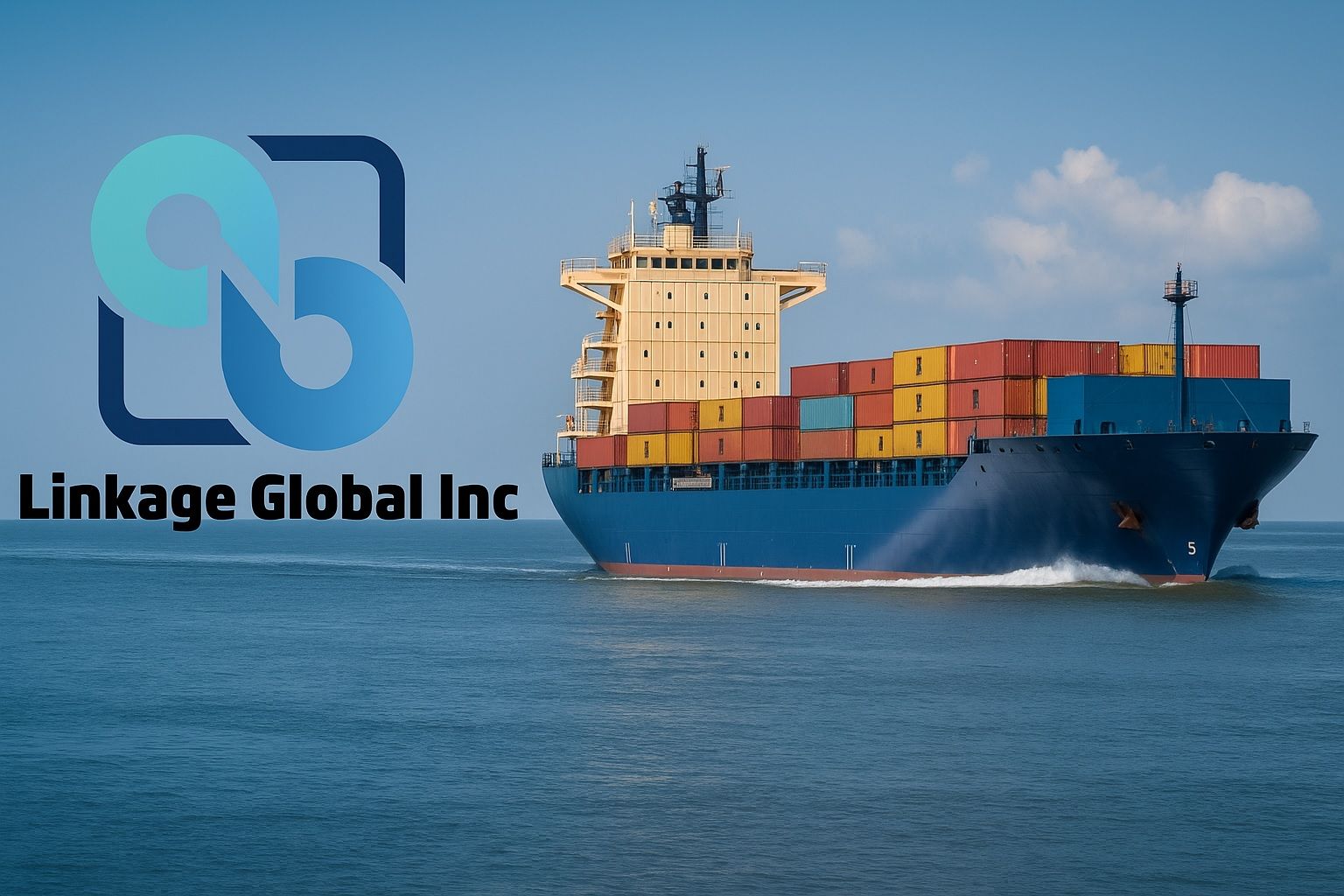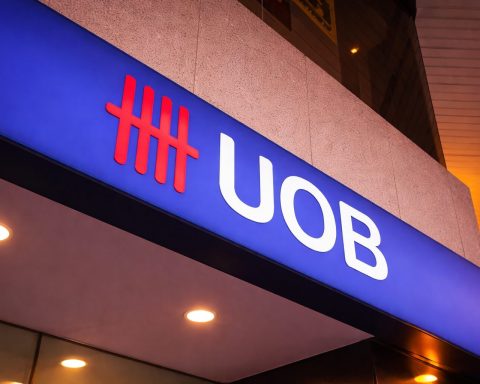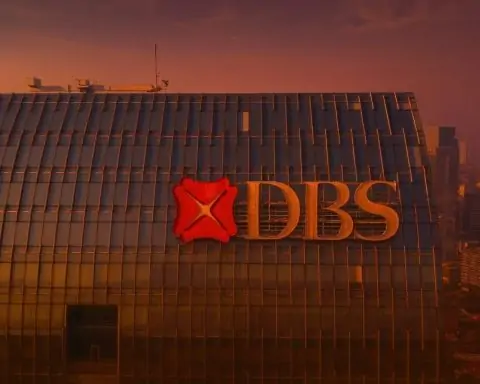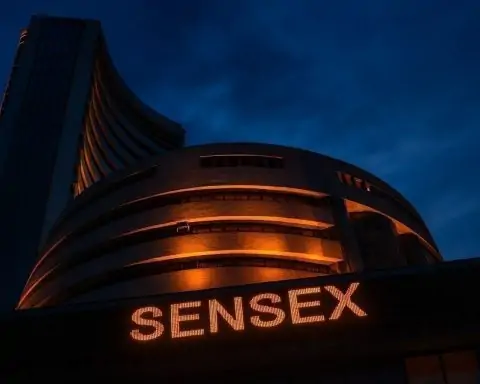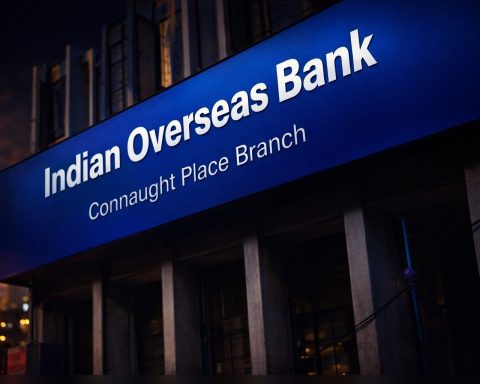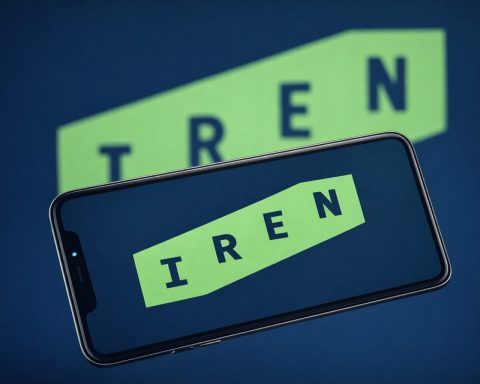- Soaring Share Price: Linkage Global Inc. (NASDAQ: LGCB) stock has skyrocketed this week. After closing at $1.65 on Oct. 15, 2025, shares surged as high as ~$3.16 in pre-market trading on Oct. 16 – an ~90% overnight jump [1] [2]. The stock is still down about 34% over the past month despite the sudden rally [3].
- Fresh Funding Deals: The company secured new financing to bolster its balance sheet. In July, Linkage raised $3.5 million via a convertible note (sold at 90% of face value) with a framework to draw up to $30 million in future tranches [4]. More recently on Sept. 26, Linkage entered a facility to sell up to $100 million in stock to an institutional investor – providing a major potential capital infusion for growth, pending shareholder approval [5] [6].
- Business Pivot & Financials: Linkage Global provides cross-border e-commerce services in Japan, China, and Hong Kong. It has been pivoting from low-margin product sales to higher-margin integrated services. In H1 2025, revenue fell 27% to $3.5 million, but gross profit surged 280% to $2.7 million as service revenues exploded (up 930% year-on-year) [7]. However, operating costs nearly doubled and net loss widened to $3.09 million (up 120%), worsened by hefty interest on a $10 million convertible bond with a steep 42.5% rate [8].
- Market Sentiment & Outlook: Only limited analyst coverage exists given Linkage’s micro-cap size (~$18 million market cap). The sole recent analyst rating is “Hold” with a $2.00 price target, roughly around current levels [9]. TipRanks’ AI-based “Spark” analyst also rates LGCB stock Neutral, noting declining revenues, profitability issues, and bearish technical trends (shares trading below key moving averages) [10]. Dilution risks are on investors’ radar too – the new funding deals could significantly increase the share count.
- Nasdaq Listing Secured: After trading below $1 last year, Linkage executed a 10-for-1 reverse stock split in April 2025 and regained compliance with Nasdaq’s $1 minimum bid price rule [11] [12]. Maintaining the listing is critical as the company seeks to execute its turnaround strategy under relatively new CEO Yang “Angela” Wang (appointed April 2025).
Stock Price Volatility Amid Funding News
Linkage Global’s stock has been on a rollercoaster, catapulting upward in recent sessions. On Thursday Oct. 16, LGCB nearly doubled in pre-market action, reaching around $3 per share [13]. This spike followed an after-hours leap the prior evening, catching traders’ attention as one of the top gainers on the market’s momentum radar [14]. Such extreme volatility is not unprecedented for LGCB – just days earlier, the thinly traded stock had also spiked over 100% intraday to ~$3.33 before pulling back [15].
The sudden rallies appear to be driven by speculative enthusiasm around the company’s recent financing announcements, rather than any big improvement in day-to-day business operations. Even after the latest surge, Linkage shares (around ~$2–3) remain well below their 52-week high of roughly $6.83 [16]. (Notably, Linkage went public in Dec. 2023 at $4.00 per share [17], so early investors have seen significant swings.) The 52-week low is about $1.22, hit amid heavy selling earlier this year [18].
Market observers caution that these dramatic moves reflect a micro-cap stock prone to outsized swings on low volume. Nearly 5 million shares changed hands on Oct. 16 morning – huge relative to Linkage’s ~11 million share float [19] [20]. Traders on social media and retail forums have spotlighted LGCB as a high-risk, high-reward play, noting the company’s tiny market cap (~$18–25 million) and the influx of potential new capital. By comparison, peer small-cap e-commerce firm Jowell Global (NASDAQ: JWEL) carries a ~$80 million market valuation [21], underscoring Linkage’s underdog status in the sector.
Major Cash Infusions: Convertible Notes and a $100M Equity Facility
Investor optimism has centered on Linkage Global’s recent funding lifelines, which aim to support its cross-border e-commerce expansion. On July 18, 2025, the company announced a $3.5 million convertible note financing in a private placement [22]. Under that deal, Linkage received ~$2.7 million at closing and expected another $450,000 once an SEC registration is effective [23]. The note was issued at a 10% discount to face value and can convert into LGCB ordinary shares. Importantly, this financing set up a framework for up to $26.5 million in additional notes down the line, contingent on certain conditions – including minimum trading volume and price thresholds for LGCB stock [24]. In other words, if Linkage’s share price and liquidity improve sufficiently, the investor could provide up to $30 million total through future note tranches, bringing substantial growth capital.
Just two months later, on September 26, 2025, Linkage unveiled an even larger funding agreement: an Equity Purchase Facility up to $100 million [25]. Under this arrangement, an institutional investor has committed to buy up to $100M worth of the company’s Class A shares over time, providing a flexible source of cash for working capital and general purposes [26]. The deal came paired with a Registration Rights Agreement to register the shares, highlighting Linkage’s effort to stay transparent and compliant with regulators [27]. Notably, shareholder approval is required to fully utilize this facility [28] – likely because issuing that many shares could greatly dilute existing stockholders. Investors will be watching whether Linkage’s shareholders (many of whom are insiders and early backers) green-light the massive capital raise. If approved, the $100M facility would dwarf Linkage’s current market cap, signifying major potential dilution but also a huge cash runway for the company’s ambitions.
Linkage’s CEO Angela Wang struck an upbeat tone on the July financing, calling it “a key milestone in our capital formation strategy that provides the flexibility needed to advance our cross-border e-commerce platform” [29]. “The structure gives us access to near-term capital while preserving the option to scale up further as conditions permit,” Wang said [30], indicating the company can tap more funds if and when its stock performance improves. Proceeds from the note are earmarked for expanding cross-border sales operations and e-commerce service lines [31] – in line with Linkage’s push to grow its integrated services for online merchants across Asia.
However, the fine print of these deals also raises risks. The convertible note’s terms were amended on Oct. 6, 2025 to adjust conversion pricing and timelines [32] [33]. According to a regulatory filing, Linkage and the note investor removed a clause that could have lowered the note’s minimum conversion price, and instead set the alternate conversion price at 90% of the stock’s recent trading average (with a fixed floor) [34]. They also extended the deadline for the required resale registration to 120 days post-closing [35]. These tweaks suggest both company and investor are navigating the volatile share price – balancing investor protections with the need to eventually register and freely trade the converted shares. Furthermore, if Linkage draws on the $100M equity facility, it will issue shares likely at market prices, which could exert downward pressure if done aggressively. Existing shareholders thus face the classic micro-cap conundrum: the company needs new money to grow, but each infusion may dilute ownership and weigh on the stock.
Cross-Border E-Commerce Pivot: Promise and Challenges
Linkage Global’s core business is helping merchants sell products across borders, especially between Japan, China, and other Asian markets. It offers end-to-end services – from supply chain and logistics to digital marketing, training, and software support – acting as a one-stop shop for international e-commerce expansion [36]. This model sets Linkage apart from traditional online retailers, positioning it more as an e-commerce service provider or enabler. The company’s long-term mission is, as stated, “to make cross-border transactions easier” [37], leveraging its experience since 2011 in Japan’s e-commerce scene.
Over the past year, management has aggressively shifted focus to higher-margin service offerings. The latest financial results show a dramatic pivot in revenue mix: In the first half of 2025, Linkage’s revenue from its legacy cross-border product sales plunged 82% to just $0.8M, while revenue from integrated e-commerce services skyrocketed 930% to $2.7M [38]. Essentially, the company has replaced a chunk of low-margin trading revenue with fees from services like merchant training, marketing, and ERP software integration. This pivot paid off in gross profitability – Linkage’s gross profit for H1 2025 hit $2.7M, up nearly four-fold from a year prior [39], even as top-line sales dropped. Gross margin expanded as the service revenue carries significantly higher margins than simply reselling goods.
Yet this transformation has growing pains. Scaling up the service business required heavier spending: operating expenses jumped ~91% in H1, reaching $4.34M [40]. The company has been hiring talent and investing in its platform, which drove up administrative costs. Consequently, Linkage’s net loss deepened to $3.09M for the half-year [41]. A major factor was the interest expense on a $10M convertible bond issued in late 2024, which carries a whopping 42.5% annual interest rate [42]. That high-cost debt (likely the one converted or refinanced by the new July note) created a large drag on the bottom line. Moving forward, achieving profitability will be an uphill battle unless Linkage can substantially boost revenue or restructure its financing costs. The infusion of new equity (via the note and purchase agreement) could help by replacing expensive debt and funding growth initiatives – but only if the business generates returns on that capital.
Linkage faces stiff competition in the cross-border e-commerce arena. Giants like Alibaba and JD.com facilitate cross-border sales at scale, and numerous logistics and marketing firms cater to global sellers. Closer comparables are small-cap peers such as Jowell Global or Treasure Global, which also serve niche e-commerce segments. Compared to these, Linkage remains very small. Its success likely hinges on carving out a specialty in the Japan–China corridor or offering superior integrated services for overseas brands. Any missteps in execution or slower adoption of its platform could leave it struggling given the limited financial cushion.
On the flip side, the market opportunity is significant: Cross-border online retail is a multi-billion-dollar growth market as merchants worldwide seek to reach consumers beyond their home country. If Linkage can establish itself as a trusted partner in this space, even a sliver of market share could drive meaningful growth for a company of its current size. The recent funding moves suggest management and investors see a pathway to scale – but it will require prudent use of capital and possibly further strategic pivots.
Analyst & Investor Perspectives: Cautious Optimism
Given Linkage Global’s tiny size and short public trading history, mainstream analyst coverage is scant. The one known analyst (per TipRanks data) rates the stock a Hold with a $2 price target [43], reflecting tempered expectations. Essentially, at around $2, LGCB would be fairly valued in that analyst’s view. The latest price surge above $3 (even if short-lived) overshoots that target, which could invite some profit-taking or downgrades unless justified by new fundamentals.
Financial commentators note that market sentiment remains mixed. TipRanks’ AI “Spark” model, which aggregates various factors, currently assigns a Neutral stance on LGCB [44]. The algorithm points to “financial performance challenges, including declining revenues and profitability issues” as key negatives, and flags that the stock was trading below key moving averages prior to this week’s spike [45]. Valuation is also a question mark: with ongoing losses, Linkage has no P/E ratio (negative earnings) and no dividend, making traditional value metrics less applicable [46]. In plainer terms, bulls are betting on future growth and successful execution of the turnaround – whereas bears focus on current losses, dilution risk, and the company’s need for continual external funding.
From a market technical standpoint, LGCB had been trending down for most of the past year (aside from some short-lived pops). Before the recent jump, it traded in the $1.50 range, near the lower end of its wide 52-week range [47]. Chart analysts note that such low-priced stocks often see bursts of momentum when positive news hits or if a short squeeze develops. Indeed, short interest in Linkage isn’t well-documented, but any thinly floated stock can be vulnerable to sharp squeezes. The company’s successful effort to regain Nasdaq compliance earlier this year – which included a one-for-ten reverse stock split in April [48] – reset the share price higher temporarily, though broader market selling and continued losses dragged it down again over the summer.
Looking ahead, investors will be watching for concrete progress on several fronts:
- Closing and Using the $100M Facility: If shareholders approve the massive equity line, will Linkage draw on it quickly? Management might choose to utilize it gradually so as not to flood the market with shares. Any indications on pricing of those sales or strategic uses of proceeds (e.g. acquisitions, technology investments) will be pivotal.
- Business Growth Metrics: The next financial update (likely Full-Year 2025 results due in early 2026) will show if the service revenue growth is sustaining and if legacy sales stabilize. Investors will want to see continued high gross margins from the service segment and an improving top line to justify the recent enthusiasm.
- Path to Profitability: With ample cash potentially on hand, can Linkage chart a roadmap to break-even? This could involve paying down or refinancing expensive debt, cost discipline, and scaling revenues faster than expenses. Any guidance from the company about reaching operating profit or positive cash flow would be a major sentiment boost.
- Macro and Sector Trends: As a cross-border trade facilitator, Linkage’s fortunes are tied to global e-commerce trends. A pickup in consumer demand in Asia, favorable trade policies, or improvements in shipping/logistics costs could provide tailwinds. Conversely, currency fluctuations or geopolitical tensions (e.g. US–China trade issues, which have loomed in recent years) could pose risks to cross-border commerce.
For now, market sentiment on LGCB is speculative but hopeful, riding on the notion that new funding equals new life for this small firm. “This financing represents a key milestone…providing flexibility to advance our platform,” CEO Angela Wang emphasized [49], suggesting management is keen to execute a turnaround with the fresh capital in hand. Still, prudent investors note that dilution is the price of survival for many micro-caps. If Linkage Global can deploy its incoming funds to ignite sustainable growth, the recent explosive stock gains may prove justified. If not, the stock’s gravity-defying jump could settle back to earth just as quickly as it took off.
Sources: Recent company press releases and SEC filings [50] [51] [52]; H1 2025 financial results [53] [54]; TipRanks/analyst commentary [55] [56]; market data from StockAnalysis & ChartMill [57] [58]; Yahoo Finance comparison [59]; Nasdaq compliance notice [60] [61].
References
1. stockanalysis.com, 2. www.chartmill.com, 3. www.chartmill.com, 4. www.stocktitan.net, 5. www.tipranks.com, 6. www.tipranks.com, 7. www.stocktitan.net, 8. www.stocktitan.net, 9. www.webull.com, 10. www.webull.com, 11. www.stocktitan.net, 12. www.stocktitan.net, 13. stockanalysis.com, 14. www.chartmill.com, 15. www.rttnews.com, 16. stockanalysis.com, 17. www.globenewswire.com, 18. stockanalysis.com, 19. www.reuters.com, 20. www.reuters.com, 21. finance.yahoo.com, 22. www.stocktitan.net, 23. www.stocktitan.net, 24. www.stocktitan.net, 25. www.tipranks.com, 26. www.tipranks.com, 27. www.tipranks.com, 28. www.tipranks.com, 29. www.globenewswire.com, 30. www.globenewswire.com, 31. www.globenewswire.com, 32. www.stocktitan.net, 33. www.stocktitan.net, 34. www.stocktitan.net, 35. www.stocktitan.net, 36. www.globenewswire.com, 37. www.globenewswire.com, 38. www.stocktitan.net, 39. www.stocktitan.net, 40. www.stocktitan.net, 41. www.stocktitan.net, 42. www.stocktitan.net, 43. www.webull.com, 44. www.webull.com, 45. www.webull.com, 46. www.webull.com, 47. stockanalysis.com, 48. www.stocktitan.net, 49. www.globenewswire.com, 50. www.stocktitan.net, 51. www.tipranks.com, 52. www.globenewswire.com, 53. www.stocktitan.net, 54. www.stocktitan.net, 55. www.webull.com, 56. www.webull.com, 57. stockanalysis.com, 58. www.chartmill.com, 59. finance.yahoo.com, 60. www.stocktitan.net, 61. www.stocktitan.net
